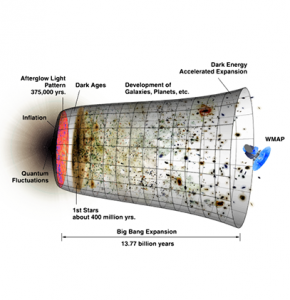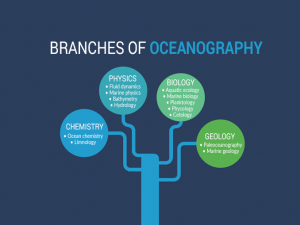17 Branches of Astronomy

“Astronomy is the study of celestial objects and phenomena. It is the all-encompassing term that studies everything beyond Earth’s atmosphere.”
Astronomy applies the concepts from physics, biology, and geology to explain their origin and evolution. We can divide astronomy into 4 sub-fields:
- ASTROPHYSICS: Applying the laws of physics in space
- ASTROMETRY: Mapping celestial bodies
- ASTROGEOLOGY: Examining rocks, terrain, and material in space
- ASTROBIOLOGY: Searching for life outside Earth
And we can categorize it into 17 branches of astronomy.
Astrophysics

Astrophysics applies the principles of physics to astronomy. Akin to geophysics which studies Earth’s physics, astrophysics relates physical processes and properties to stars, celestial bodies, and its surrounding space.
Cosmology is different from astrophysics because it studies the evolution and expansion of the universe. For example, cosmologists study red-shift to see how fast the universe is expanding.
Spectroscopy studies how light reflects, absorbs, and transfers between matter. In a similar manner, photometry examines how luminous astronomical objects are in space based on electromagnetic radiation properties.
- ASTROPHYSICS – How the laws of physics apply to stars and celestial bodies.
- COSMOLOGY – How the universe was created, evolved, and its ultimate fate.
- SPECTROSCOPY – How light reflects, absorbs, and transfers between matter.
- PHOTOMETRY – How luminous astronomical objects are in space based on electromagnetic radiation.
- HELIOPHYSICS – How the sun’s constant and dynamic radiation affects its surroundings in space.
- HELIOSEISMOLOGY – How the interior structure and dynamics of stars are composed by observing waves from their surface.
- ASTEROSEISMOLOGY – How to study the internal structure of stars by observing their oscillations.
Asteroseismology is closely related to helioseismology. They both study the internal structure of stars by measuring radiation and oscillations. But helioseismology is specific to our sun.
Finally, heliophysics studies the sun’s constant and dynamic radiation that affects its surroundings in space. There have been various heliophysics missions to study space weather, solar flares, and the constant stream of solar particles from the sun.
Astrometry

Instead of the physics that drives motion in space, astrometry focuses on the precise position of celestial bodies. It also provides a frame of reference for the movement of stars and individual objects in space.
On a similar note, exoplanetology inventories how many and where planets exist outside of our solar system. This inventory of planets lists all potential residences for new life outside of Earth
Planetary science (planetology) is concerned with how planets form in the solar system including their composition and dynamics in history. This subject is tied closely to planetary geology.
- ASTROMETRY – How celestial bodies are positioned and move in space.
- PLANETOLOGY – How planets form in the solar systems including their composition and dynamics in history.
- EXOPLANETOLOGY – How many and where planets exist outside our solar system.
Astrogeology

When the Mars Rover started wheeling around the red planet, its crosshairs were targeting the rocks and geology of Mars. Specifically, it was getting a close-up of the composition or areology of Mars.
READ MORE: 15 Facts About Mars: The Remarkable Red Planet [Infographic]
Astrogeology is very closely related to exogeology. They both focus on how geology relates to celestial bodies like moons, asteroids, meteorites, and comets.
Lastly, selenography studies the physical features of the moon. For example, it understands and catalogs features such as lunar maria, craters, and mountain ranges on the moon.
- ASTROGEOLOGY – How geology relates to celestial bodies like moons, asteroids, meteorites and comets.
- AREOLOGY – How geology is composed on Mars.
- SELENOGRAPHY – How physical features on the moon formed such as lunar maria, craters, and mountain ranges.
- EXOGEOLOGY – How geology relates to celestial bodies like moons, asteroids, meteorites, and comets.
Astrobiology

Astrobiology involves the search for life outside Earth. It also asks the questions: What is the origin and evolution of life? Is there life on other planets? Which environments can support life?
If you want to measure the probability of life in space, exobiology considers planetary conditions for life. For example, exobiology also understands the early evolution of life and the biological/environmental factors to advance life.
Lastly, astrobiology pulls from astrochemistry to better understand substances in celestial bodies, stars, and interstellar space. Observing molecules in space gives a solid indication of the physical conditions of what we are used to on present-day Earth.
- ASTROBIOLOGY -How life (including extraterrestrials) in the universe evolved, originated, and what will be its fate.
- EXOBIOLOGY – How likely and where is life in space.
- ASTROCHEMISTRY – How to study substances in celestial bodies, stars, and interstellar space.
Other Resources
1. NASA Astrophysics
The NASA Astrophysics division finds our place in the universe. Specifically, it studies everything from dark energy, dark matter, black holes, the Big Bang, types of galaxies, stars, and exoplanets.
Find out more on the official NASA astrophysics website.
2. The searchable astronomical database
The searchable astronomical database helps you orientate in the sky. It assists in organizing and making searchable all the world’s astronomical information.
First, you submit an image of the sky. Next, it will return known objects that fall inside the view.

















I love all of this that we don’t know about this world
This is very cool
Good 👍
I am from India, I am an arts student. I am very interested to know about the universe. I just keep trying to know about the universe but I don’t understand anything about the universe properly.
I am 13 years old and this site has been a big help for me and my school projects Thank you.
Not sure which career path I want to take out of these categories, but this article was helpful in showing each separate branch of astronomy and what they do.
Thank you so much! I have a passion for space, maths, and physics!
The universe is beautiful we can’t deny it. And we are curious about the universe because it’s mysterious and there are endless things for us to discover. Astronomy is love. And there is astrophysics, astrobiology, astrochemistry, and many more.
I’ve got the passion to study astronomy and this site was so helpful
My Great Uncle discovered Pluto’s biggest moon, Charon. The name comes from James Christy’s wife’s name, Charlene.
Wish there was such a school in Kenya for astronomy. many brains are capable of understanding these courses.
I am pursuing Aerospace Engineering or Astrophysics as a degree in a couple of years, and this really helped me open my mind to how many different fields there are, and I definitely think I am going to pursue working at NASA for astrophysics.
I am going into year 7 and this website is really helpful. Best website ever!
Thank you so much for this much-needed information
I love this academic work. It’s encouraging. Keep it up.
This is very helpful for me to know about more scopes. This website sort outed my so many problems. Thanks for it.
The universe is so huge! There is so much to study and discover. God is so creative. I definitely want to study astronomy.
Am also a fan of space science I love it.
I am interested in working at NASA when I am older so this was very helpful. Thank you!
Helpful! Helped me see the different branches.
Really helpful …thank you so much
After searching this, I am very fascinated and curious to know how exactly this universe works and what is the key to know the secrets of the cosmos. Well, the site was too helpful!
This website was totally helpful with my science assignment!
Not sure which career path I want to take out of these categories, but this article was helpful in showing each separate branch of astronomy and what they do.
I am 11 years old and I am a big fan of space science. This website was very interesting for me.